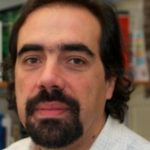
Bridging the gap between the community and decision-makers
Dr Nuno Pinto, Lecturer in Urban Planning and Urban Design, Spatial Policy and Analysis Lab, Manchester Urban Institute, discusses how public participation in Brazil can become more capable of helping change the urban landscape in the post-pandemic context.
Some content on this page is available in Portuguese and English. Choose your language below.
The COVID-19 pandemic has flooded the public discussion with data, indicators and models to support evidence-based public health policy design.
The public is now versed on discussing the pros and cons of flattening the contagion curve or the R number to support lockdown measures. This data- and evidence-intensive context has possibly a positive effect in consolidating the value of data, models and their scientific groundings for supporting decision-making in public policy, increasing levels of public engagement and participation.
In Brazilian cities, as in the rest of the world, public participation is key for implementing an everlasting agenda for tackling urban inequalities. Brasília is an example of how the inexistence of public participation in the 1950s helped the failure in delivering a utopian city, creating an unequal city. Today, this inequality is higher than ever, and a bottom-up movement of community groups, the coletivos, has emerged to be part of the urban revolution through art, social intervention and urbanism.
Urban inequality born out of a utopian new city
Brasília’s urban planning and urban design aimed, in the height of the modernist movement, at creating the rational city, the closest attempt to build Le Corbusier’s Ville Radieuse to date, where functions (government, education, economic activities, military etc) and individuals working in these functions were carefully located to ‘optimise’ a functionalist idea of a city. The voluntarist benevolence of this top-down design by its creator, architect Lúcio Costa, and its promoter, the Government of Brazil, was not sufficient to respond to a clear brief of creating a beacon of Brazil’s modernity: a successful city; clean; free of poverty, social problems and protests; and quickly subdued the possibility of the poorest to remain living in the beautiful city.
Today, this inequality is higher than ever, and a bottom-up movement of community groups, the coletivos, is part of the urban revolution through art, social intervention and urbanism.
Dr Nuno Pinto / Lecturer in Urban Planning and Urban Design
The design failed to create an equal city. The inexistence of planned housing areas for the poorer, the option for a corporativist spatial distribution of housing and the mobility infrastructure designed for the private car are perhaps the most important factors that led to the centrifugation of large masses of poor households – the ones of the candangos, migrant workers from all corners of Brazil who built the city and, against the plan, remained in Brasília afterwards – to distant, some planned (some others not) new settlements like Gama, Sobradinho or Taguatinga.
Public participation is a key factor for creating more equal urban environments. However, in Brazil (as in the rest of the world) this was an absent concept in the late 1950s, becoming increasingly more visible in Brazil in the mid-1980s due to both the change to the democratic regime and the emergence of community movements in the decades that followed.
Coletivos: how social intelligence is helping to implement urban change
Today, inequality in Brasília is deepening fast. All indicators show how income, education and access to public services are unequally distributed in the fast-growing metropolitan area. Locally, community groups, the coletivos, emerged addressing urban issues like mobility, urbanism and infrastructure through arts and social intervention, filling in void spaces in the community governance system. However, the coletivos (and their communities) hardly get a seat at the decision table.
These bottom-up, community-led groups know by experience and local practice the main opportunities, challenges and bottlenecks in their communities. They know the politics of the city, the politics of development and how these, in Brazil, have been failing to deliver an effective agenda of reduction of poverty and inequality. What they most probably lack is a more robust understanding of the processes that lead to the decisions, the middle part of the decision-making process between knowing the problem and taking political decisions to tackle it.
There is space to capture the coletivos' immensely rich social intelligence and give it a simple, intelligible and effective technical robustness, to make them more qualified agents of policy, as good a stakeholder as any other, to give them a seat with a heard voice at the table. The overwhelming discussions during the pandemic on data, indicators and models can contribute to increase their literacy in decision-making and in policy design and implementation.
In the Portuguese language, politics (política) and policy (política pública) share an increasingly more damned word – politics. One could argue that, as for most of the public, the coletivos and their communities have a hard time in distinguishing the two concepts, focusing on the politics behind policies. The pandemic, with its data and models, has opened the possibility of making this distinction more effective, thus creating better conditions to leverage the Brasília coletivos a couple of notches in the decision-making scene.

